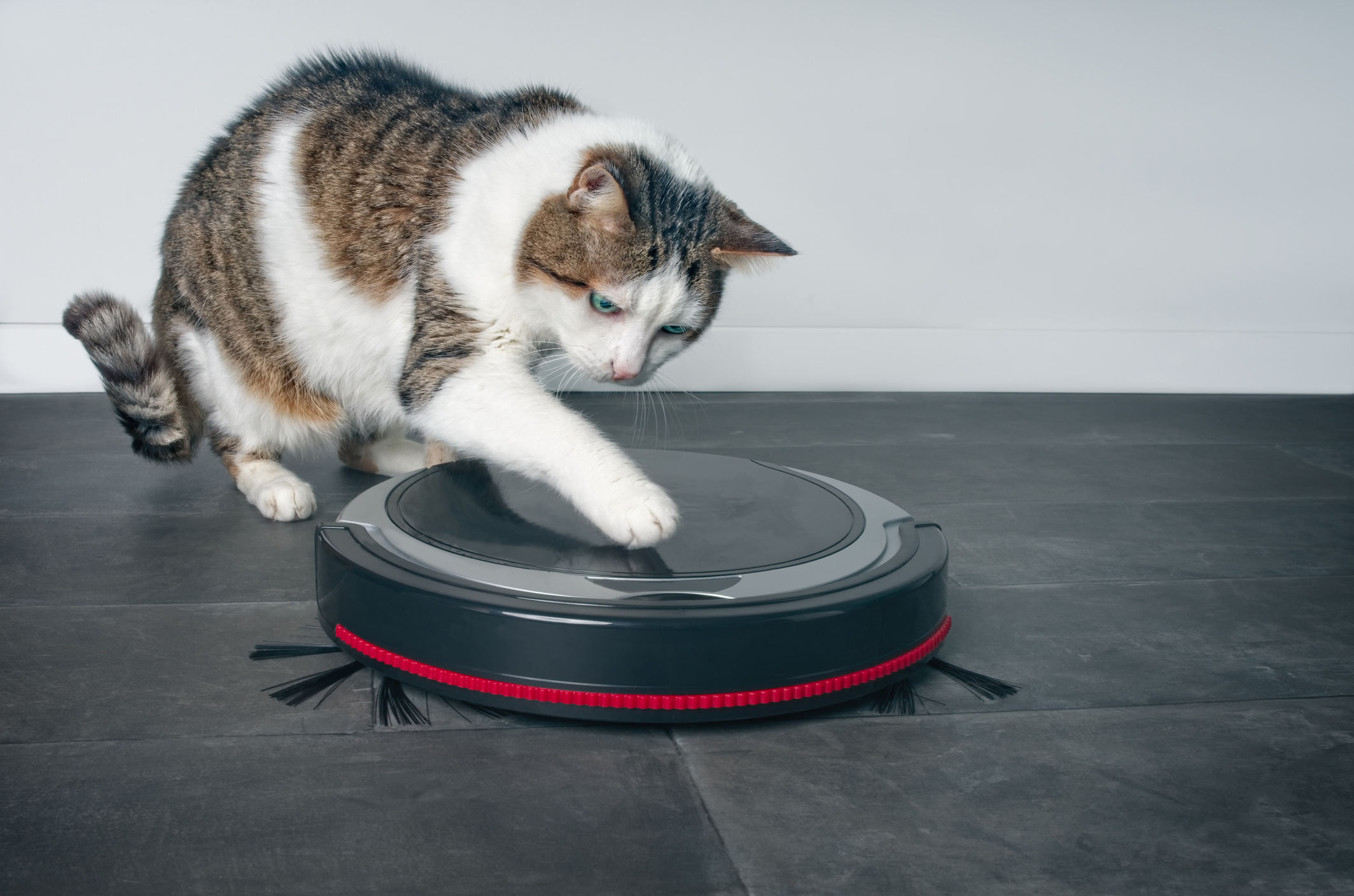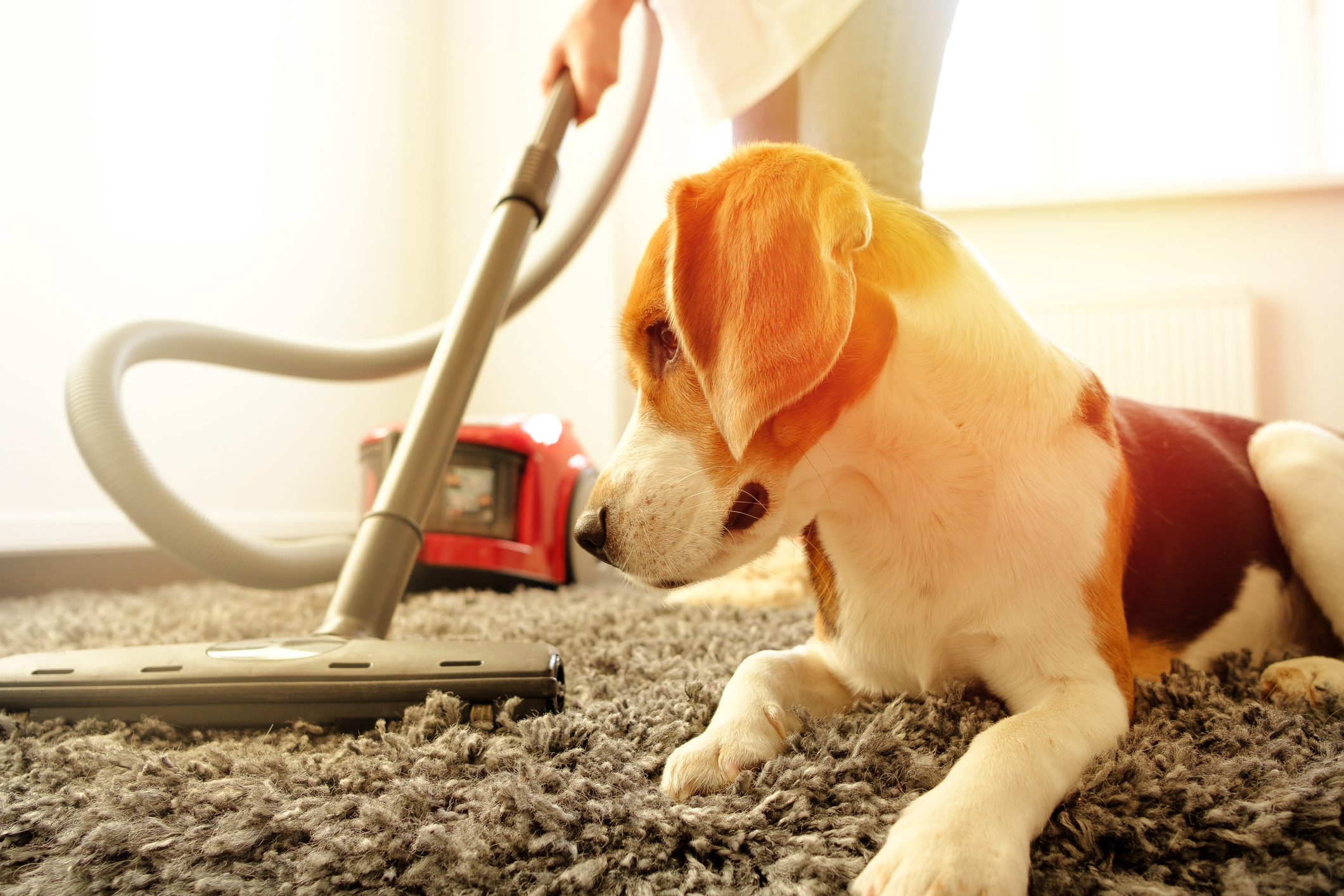
This is Why Pets Are So Terrified of the Vacuum!
Your pets are surrounded by noise and strange machines within your home. Ringing phones, firing furnaces and televisions complement the sounds of people walking around, closing doors and clanking dishes. But when the time comes to clean your home and you pull out the vacuum cleaner, your pets are likely go running.
Both cats and dogs tend to be afraid of the vacuum, whether it’s traditional, hand-powered or robotic. But why does the mere sight of this machine make pets away run in fear? And how can you get your house cleaned without terrorizing your pets? Here’s what you should know.
Vacuums are scary!
It’s pretty easy to understand why vacuums are so alarming to pets. First thing’s first, they make a lot of noise, and that noise begins abruptly. The machines themselves are also large and have lots of moving parts, like the scary suction tube or constantly rotating brush rolls.
Vacuums also move a lot. Unlike other noisy machines that stay put, like the dishwasher, the vacuum moves—often erratically—around the home, popping up when your pet may not expect it and startling them with its loud entrance. They’re also not used quite often enough for your pet to ever get truly familiar with it.
Robot vacuums that operate independently may be even worse for pets, since the machines make noise and move on their own. And, unlike a toy, a robot vacuum isn’t fun for your furry friend.

Dogs and cats are usually spooked by the vacuum’s first appearance. You might pull the vacuum out and fire it up without thinking—after all, it’s normal to you—and then realize you’ve traumatized your four-legged friend as they run around the corner to hide in another room. This first impression can pave the way for a lifetime of vacuum-related fear.
Alleviating your pet’s fear of the vacuum
Obviously, you don’t want to continue to scare your pet with the occasional vacuum session. Stress isn’t good for pets, and multiple scary encounters with the vacuum can exacerbate your pet’s fear. However, you can’t exactly stop using the vacuum entirely in order to keep your pet calm. So, what do you do?
There are multiple ways to combat your furry friend’s fear of the vacuum.
Shield your pet
One of the fastest and easiest ways to navigate vacuum-related fear is by controlling your pet’s environment while you vacuum other parts of the house. If you’re working on the living areas, put your dog in a quiet bedroom upstairs with a toy, ideally with the television or music playing to muffle the noise.
When you eventually need to vacuum that room, place your pet in a different room and repeat until you’ve finished cleaning. This method distracts your furry friend and keeps them occupied—no stress involved.
Desensitization training
Another way you can help minimize your pet’s fear of the vacuum is by targeting it directly using a more time-intensive training process. This process might be best used when your pet is first introduced to the vacuum to start their “relationship” off on the right foot, but it can also be used with pets who have already experienced vacuum-related terror.

- Introduce the vacuum: With a friend, put your pet in a room and have a bag of treats handy. Stay with your pet as the friend goes to get the vacuum, bringing it into the room but keeping it as far away from your pet as possible. Pets who have already been introduced to the vacuum may need extra distance, since they may have an immediate fear response.
- Create a positive association: With the vacuum off but in the room, give your pet treats to create a positive association with the vacuum. Repeat this process, bringing the vacuum into and out of the room while giving your pet treats as long as they remain relaxed. Try this for a day or two in a row, so as to not push your pet’s boundaries.
- Introduce vacuum movement: Next time, repeat the process, only have your friend move the vacuum around as if they were vacuuming, while keeping the vacuum off. Give your pet treats as long as they stay relaxed while the vacuum moves around somewhat erratically and gets closer to them.
- Desensitize to noise: The final step is the scariest: turning the vacuum on. Keep your pet in the room where you’re doing training. Have your friend stand outside in the hallway or around the corner and switch on the vacuum for a few seconds, so the sound can be heard but the vacuum isn’t visible. Give your pet treats as usual and watch their body language. Repeat this process, only with the vacuum closer to the room and finally inside the room with your pet. Remember to take this step slow, since most pets react to the noise of the vacuum most.
Eventually, your pet should be able to tolerate the sight, movement and sound of the vacuum near them. Reward your pet with treats the first few times you vacuum, as long as they behave properly, to maintain the positive association and allow you to clean your home without added stress.


